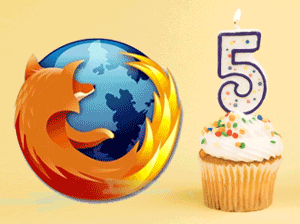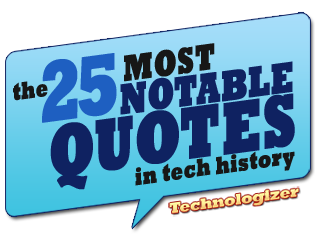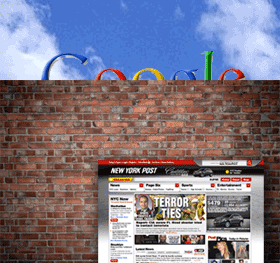 Mozilla’s Firefox 1.0 officially became available on November 9th, 2004–which means that the Little Browser That Could officially turns five today. It’s not the world’s dominant browser–while market share estimates vary widely, all show that Internet Explorer still has a sizable lead–but it’s surely the most beloved browser on the planet.
Mozilla’s Firefox 1.0 officially became available on November 9th, 2004–which means that the Little Browser That Could officially turns five today. It’s not the world’s dominant browser–while market share estimates vary widely, all show that Internet Explorer still has a sizable lead–but it’s surely the most beloved browser on the planet.
(It’s definitely the dominant browser in the Technologizer community–around 40 percent of visits have been made using it this month, via 28 percent with IE, 18 percent with Safari, and nine percent with Chrome.)
In celebration of Firefox’s first half-decade, here are some quick reflections on why it’s one of the most significant software products of this or any other era:
1. It reignited the browser wars. Back in 2004, Internet Explorer had more than ninety percent of the market and seemed to be on its way to as close to 100 percent as any product could conceivably attain. Other alternative browsers, such as Opera and earlier versions of Mozilla, had market shares that looked like rounding errors. Then Firefox appeared and quickly gained traction. Its strategy for success was a clever one: It was just a good browser, period. And today, there are more significant browsers than during any period since the inception of the Web: IE, Firefox, Safari, Chrome, Opera, and the Firefox variant I have a soft spot for, Flock. There’s probably some alternate world in which Firefox didn’t come along, IE’s market share is still monopolistic, and the Web is a much less interesting place.
2. It helped enable powerful Web apps. The leading browser of the pre-Firefox era, IE 6, was notoriously, willfully contemptuous of Web standards. Writing sophisticated Web-based applications such as e-mail clients that work with it was an exercise in frustration, albeit one which any company that wanted to write such apps had to go through. But Firefox set a good example by adhering to standards such as CSS and JavaScript that enable today’s Web apps. And Safari (which predated Firefox), Chrome, and even IE 8 all get it, too.
3. It’s the most mainstream open-source project to date. Linux is a remarkable accomplishment, but its domain remains servers and geeks who are passionate about software. Firefox showed the open-source community could build something that appealed to just about everybody–including folks who have no idea what open-source software is.
4. It’s spurned bloat. In many ways, today’s Firefox 3.5 doesn’t feel radically different from 2004’s Firefox 1.0. That’s a good thing–Mozilla has added features sparingly and avoided the temptation to lard its browser up with “improvements” that mostly add clutter. Instead, it offers one of the richest platforms for add-ons that the software world has ever known, allowing every Firefox user to build a browser that has exactly the features that he or she wants.
5. It gave the Netscape story an unexpectedly happy ending. The tale of the once-mighty Netscape Navigator was a sad one, whether you believed that its fall was due to unfair tactics by Microsoft or self-inflicted wounds (or a bit of both). By 2004, Navigator appeared to be well on its way to irrelevance. But Firefox, which exists only because of Netscape’s long-ago decision to open-source its code, is in effect the next-generation Navigator. With all due respect to F. Scott Fitzgerald, its success shows that there are indeed second acts in American lives. At least if the American in question happens to be a piece of software.
No, Firefox isn’t perfect–if I get a moment, I’ll write about five challenges it faces–but its huge influence made the world a better place. Even if you use IE or one of its other competitors.
Your thoughts, celebratory or otherwise?
 Good grief! Kiplinger’s Personal Finance has published its Best of Everything 2009 feature, which provides picks for everything from mutual funds to cars to colleges to travel deals. It’s also got a category for “Best Tech Gadget Guru,” and Kiplinger’s choice in that category is…me!
Good grief! Kiplinger’s Personal Finance has published its Best of Everything 2009 feature, which provides picks for everything from mutual funds to cars to colleges to travel deals. It’s also got a category for “Best Tech Gadget Guru,” and Kiplinger’s choice in that category is…me!


 It’s not
It’s not  Like many media moguls, Rupert Murdoch keeps accusing Google of unfairly monetizing his sites’ content by indexing and selling ads next to search results that contain links to it. Now he’s talking about fighting back, by taking the simple step of
Like many media moguls, Rupert Murdoch keeps accusing Google of unfairly monetizing his sites’ content by indexing and selling ads next to search results that contain links to it. Now he’s talking about fighting back, by taking the simple step of  Mozilla’s Firefox 1.0 officially became available on November 9th, 2004–which means that the Little Browser That Could officially turns five today. It’s not the world’s dominant browser–while
Mozilla’s Firefox 1.0 officially became available on November 9th, 2004–which means that the Little Browser That Could officially turns five today. It’s not the world’s dominant browser–while  I long ago gave up on trying to cover every weird rejection of an application intended for Apple’s iPhone App Store, but this one merits quick mention. Tom Richmond, the excellent caricaturist whose work appears in MAD these days, has
I long ago gave up on trying to cover every weird rejection of an application intended for Apple’s iPhone App Store, but this one merits quick mention. Tom Richmond, the excellent caricaturist whose work appears in MAD these days, has 
 Exactly one year ago, on November 6th, 2008, I was siting in the audience at the Web 2.0 Summit when AT&T Mobility President Ralph De La Vega shared good news from the stage: The company would “soon” be permitting iPhone users to tether their phones for use. I assumed he was a reliable source and
Exactly one year ago, on November 6th, 2008, I was siting in the audience at the Web 2.0 Summit when AT&T Mobility President Ralph De La Vega shared good news from the stage: The company would “soon” be permitting iPhone users to tether their phones for use. I assumed he was a reliable source and